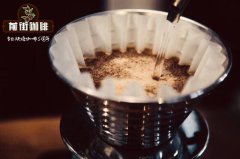Kenya coffee beans, Kenya coffee beans

Professional coffee knowledge exchange more coffee bean information please follow the coffee workshop (Wechat official account cafe_style)
Qianjie-introduction to coffee grading in Kenya
The characteristics of Kenyan coffee:
Kenya's coffee and coffee producing areas are mainly concentrated in Mount Kenya (Mt. The plateau area represented by Kenya (elevation 1500-2100m). The main producing area is the central tropical climate, acid red volcanic soil brings multi-layered fruit and wine acidity to Kenyan coffee, such as citrus and berries. Kenyan soil is rich in phosphoric acid to bring unique bright acidity to Kenny coffee.
Common grades of washed Kenyan coffee:
Hand-picked coffee fruit, after hand-picked, picked out immature fruit (unripe), overripe fruit (overripe) and other defects, peeled, after about 36 hours of fermentation, placed on a metal grid for sun drying, in the processing plant to remove the seed shell (parchment) to become a blue-green appearance of Kenyan raw beans. According to the size (size), shape (shape) and weight (weight) of these raw beans, they are divided into
E:kenya E, elephant beans, above elephant bean,18 (including round beans)
AA:Kenya AA,17-18 mesh
AB:Kenya AB,15-16, which is a mixture of An and B.
Grade An above 17 items (6.8mm)
Grade B above 16 mesh (6.3mm)
Light beans selected by TT:AA and AB by airflow separator
Over PB:Kenya PB,15, round beans and peaberry account for about 10% of Kenyan coffee.
CRV 12-14 mesh and PB light bean screened by air flow separator
Under 12 eyes, there are more defective beans, chopped beans and light beans.
HE: beyond the above level becomes HE (Hulled Ears)
Knowledge: Kenyan coffee producing areas are mainly distributed in Central Province, Eastern Province, Western Rift Valley Province and Nyanza Province.
In short: Qianjie is a coffee research hall, happy to share the knowledge about coffee with you, we share unreservedly just to make more friends fall in love with coffee, and there will be three low-discount coffee activities every month. The reason is that Qianjie wants to make more friends drink the best coffee at the lowest price, which has been Qianjie's tenet for 6 years!
END
Important Notice :
前街咖啡 FrontStreet Coffee has moved to new addredd:
FrontStreet Coffee Address: 315,Donghua East Road,GuangZhou
Tel:020 38364473
- Prev

Which Kenyan coffee brand should recommend the top beauty with the characteristic flavor of Kenyan aa coffee?
Professional coffee knowledge exchange more coffee bean information please follow the coffee workshop (Wechat official account cafe_style) Front Street-Kenya Coffee grading introduction Kenya is a well-known producer classified by the size of coffee beans. It is usually divided into nine grades, according to the bean type, there are PB, or round beans, accounting for about 10% of the total output, in addition to E (elephant beans), AA, AB, C, T according to size.
- Next

What are the recommendations of African coffee brands? Yega Xuefei has been strictly screened through layers of checks.
Professional coffee knowledge exchange more coffee bean information please follow the coffee workshop (Wechat official account cafe_style) front street-Yega Xuefei Coffee introduction Yega Xuefei-Arecha belongs to a processing plant in the Yega Sheffei producing area, nearby delivery to this processing can be called Arecha. Since coffee in Ethiopia is rated by the country and managed uniformly, it is made up of
Related
- Beginners will see the "Coffee pull flower" guide!
- What is the difference between ice blog purified milk and ordinary milk coffee?
- Why is the Philippines the largest producer of crops in Liberia?
- For coffee extraction, should the fine powder be retained?
- How does extracted espresso fill pressed powder? How much strength does it take to press the powder?
- How to make jasmine cold extract coffee? Is the jasmine + latte good?
- Will this little toy really make the coffee taste better? How does Lily Drip affect coffee extraction?
- Will the action of slapping the filter cup also affect coffee extraction?
- What's the difference between powder-to-water ratio and powder-to-liquid ratio?
- What is the Ethiopian local species? What does it have to do with Heirloom native species?

